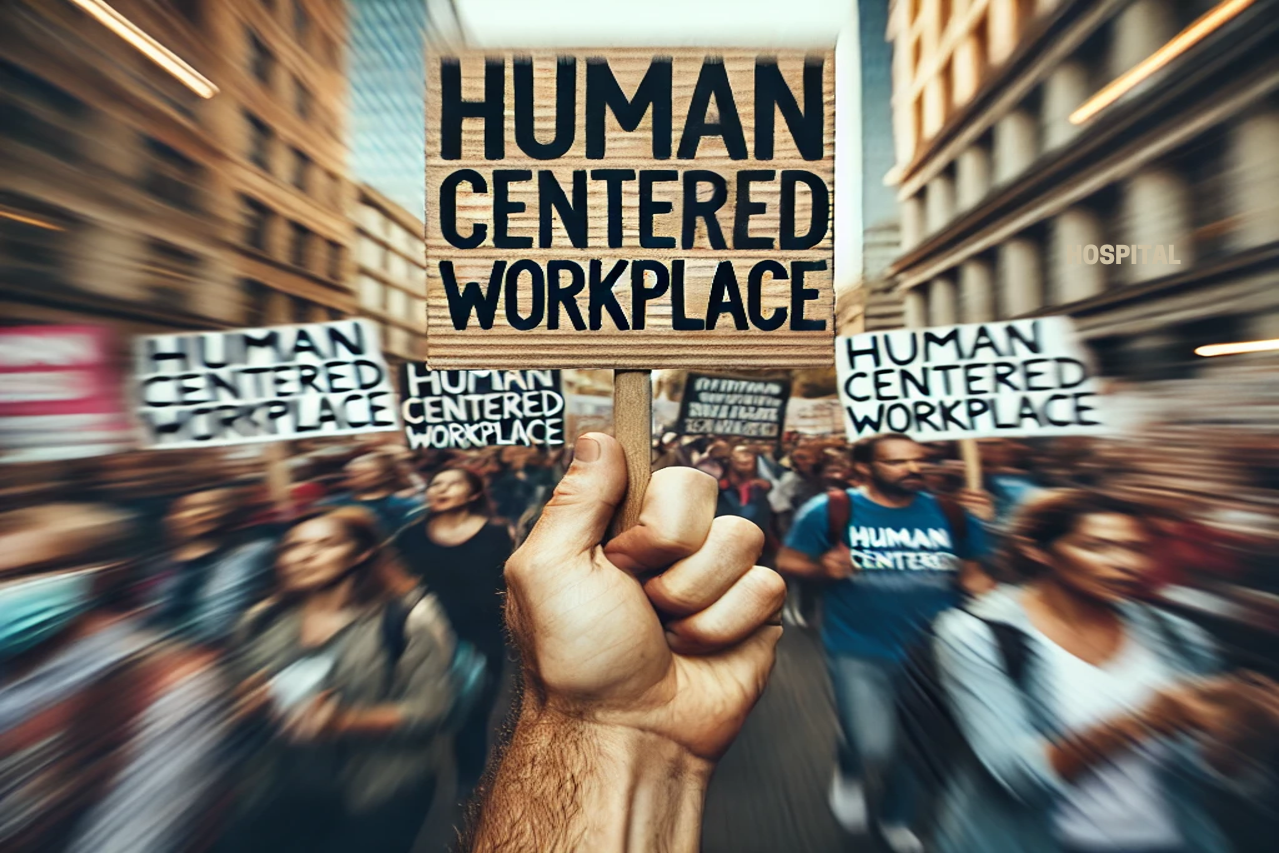As artificial intelligence continues to transform industries and redefine the workplace, many employees are left wondering: what does this mean for me? Concerns about job security, fair treatment, privacy, and the ethical use of AI are at the forefront of workers’ minds. Will AI be used to enhance their roles or replace them? How will their data be handled, and will decisions made by AI be fair and transparent?
These are valid questions in a rapidly changing world. Recognizing these concerns, the U.S. Department of Labor has developed a comprehensive set of AI Principles and Best Practices designed to ensure that AI in the workplace benefits workers as much as it does employers.
On October 16, 2024, Acting Secretary of Labor Julie Su hosted a landmark event to introduce the U.S. Department of Labor’s AI Best Practices, a comprehensive framework designed to ensure artificial intelligence enhances job quality while safeguarding workers’ rights and well-being. The online gathering brought together leaders from labor unions, businesses, non-profits, and government to focus on the ethical and responsible use of AI in the workplace.
The initiative aligns with President Biden’s Executive Order on the Safe, Secure, and Trustworthy Development and Use of Artificial Intelligence, which underscores the importance of prioritizing workers’ interests in AI’s evolution. The AI Best Practices serve as a critical step in ensuring that AI technologies are deployed responsibly to empower workers and improve workplace conditions.
A Commitment to Responsible AI Use
In her address, Acting Secretary Su highlighted AI’s transformative potential in the workplace, emphasizing the department’s mission to ensure AI is leveraged to foster equity, expand opportunities, and enhance job quality. “We have a shared responsibility to ensure that AI is used to expand equality, advance equity, develop opportunity, and improve job quality,” Su stated.
The guidelines are designed to support employers and AI developers in creating and implementing AI technologies that uplift workers and prioritize ethical considerations.
Centering Worker Empowerment
One of the cornerstone principles of the Department of Labor’s AI guidelines is the emphasis on worker empowerment. Workers should not only be informed about the use of AI in their workplace but should also have meaningful input into its design, development, and deployment. This includes ensuring that the voices of underserved communities are heard throughout the process. The goal is to make AI systems tools for inclusion, not exclusion, and to foster environments where workers feel they have control over the changes AI may bring.
Empowering workers is not just about inclusion—it’s about improving outcomes for everyone. By engaging workers early in the AI lifecycle, businesses can develop systems that better meet the needs of their workforce. For unionized workplaces, this means engaging in good-faith bargaining over the introduction of AI and electronic monitoring systems. Such collaboration ensures that AI not only enhances productivity but also respects workers’ rights and fosters trust.
Ethical Development of AI
AI systems must be developed ethically, with a focus on protecting workers’ rights, safety, and well-being. This involves designing systems that are free from bias, meet rigorous safety standards, and promote equity. AI technologies must avoid discrimination based on race, gender, disability, or other protected categories.
Developers play a crucial role in this process. They must establish clear ethical standards and conduct independent audits of their AI systems to ensure fairness and reliability. For example, an AI tool used in hiring decisions must be evaluated for algorithmic bias to prevent discrimination. Regular impact assessments, published in an accessible format, are essential for ensuring that AI systems deliver their intended benefits without causing harm.
Equally important is the protection of workers involved in developing AI systems. Jobs created to refine data inputs must adhere to labor standards and provide fair conditions. These safeguards not only ensure ethical AI development but also set a precedent for future technologies to prioritize human rights.
Establishing AI Governance and Oversight
For AI to be implemented effectively and responsibly, organizations must establish strong governance systems. Clear structures and procedures are necessary to oversee AI adoption, ensuring its use aligns with ethical principles and supports worker well-being. Governance involves everything from monitoring AI outputs to providing human oversight for decisions informed by AI systems.
Employers should create dedicated roles or committees to oversee AI systems, ensuring accountability at every level. These governance bodies should include input from workers and their representatives, helping to bridge the gap between technology and the workforce it impacts. Furthermore, governance systems should address potential risks, such as discrimination or safety hazards, and establish processes for regular audits and evaluations.
Training is another critical component. Employees at all levels—executives, managers, and frontline workers—should receive training on the AI systems in use. This training should cover the purpose of the AI, how to interpret its outputs, and how to raise concerns about its operation. By fostering a culture of understanding and oversight, organizations can maximize the benefits of AI while minimizing its risks.
Transparency in AI Use
Transparency is a vital element of responsible AI implementation. Workers and job seekers must be informed about how AI systems are being used, what data is being collected, and how decisions are being made. This transparency builds trust and allows workers to feel more secure in their roles.
Employers should provide advance notice about the deployment of AI systems, explaining their purpose and potential impact. For example, if an AI tool will be used to monitor performance, workers should understand how it operates and what metrics it tracks. Employers should also disclose what data is being collected and provide workers with opportunities to review and correct inaccuracies.
Such transparency fosters a collaborative environment where workers can provide feedback on AI systems. This feedback is invaluable for improving AI technologies and ensuring they align with the needs of the workforce. Ultimately, transparency empowers workers and promotes a sense of shared responsibility in the workplace.
Protecting Labor and Employment Rights
While AI offers numerous opportunities, it also poses risks to labor and employment rights. Employers must ensure that AI systems do not undermine workers’ rights to organize, fair wages, or safe working conditions. For instance, AI tools used for electronic monitoring should not interfere with workers’ ability to take breaks or communicate with one another.
To uphold these rights, employers should audit AI systems for potential discrimination or adverse impacts. For example, an AI scheduling tool should not penalize workers who require accommodations or federally protected leave. Regular monitoring and analysis are essential to identify and address any unintended consequences.
Special consideration should also be given to workers with disabilities. AI systems should be designed to reduce barriers and enhance accessibility, ensuring that all workers can benefit from technological advancements. Employers must also provide mechanisms for workers to raise concerns about AI systems without fear of retaliation.
Using AI to Enable Workers
AI should be seen as a tool to enhance, not replace, human labor. By automating repetitive tasks and assisting with routine decisions, AI can free workers to focus on more meaningful responsibilities. However, for this potential to be realized, employers must implement AI systems thoughtfully and inclusively.
Before deploying AI, employers should assess its impact on job tasks, required skills, and job opportunities. Workers should be involved in this process, providing insights on how AI can complement their roles. Piloting AI systems before full implementation allows for valuable feedback and adjustments, ensuring the technology aligns with organizational and worker needs.
Employers should also consider how to share the benefits of AI-driven productivity gains. This could include higher wages, improved benefits, or reduced working hours without loss of pay. By prioritizing job quality, businesses can attract and retain top talent while fostering a positive workplace culture.
Supporting Workers During Transitions
As AI transforms industries, some jobs may be restructured or eliminated. To mitigate the impact of these changes, employers must invest in upskilling and retraining programs. These initiatives can help workers adapt to new roles and remain valuable contributors to the organization.
Employers should prioritize retraining displaced workers for other positions within the company. Collaborating with local workforce development programs can also provide workers with access to education and training opportunities. By supporting workers through transitions, businesses can build loyalty and resilience in their workforce.
Responsible Use of Worker Data
Data privacy and security are paramount in the age of AI. Employers must handle worker data responsibly, limiting its collection and use to legitimate business purposes. Sensitive information, such as disability status or genetic data, should be safeguarded against misuse.
Organizations should establish clear policies for data protection, including appointing a Data Protection Officer to oversee these efforts. Workers should be informed about what data is being collected and have opportunities to correct inaccuracies. In the event of a data breach, employers must act promptly to mitigate harm and inform affected workers.
By prioritizing data security, businesses can build trust with their workforce and demonstrate their commitment to ethical practices.
Realizing AI’s Potential in the Workplace
When implemented responsibly, AI has the potential to revolutionize the workplace. It can enhance productivity, improve job quality, and create new opportunities for workers. For example, AI tools can assist with routine tasks, allowing employees to focus on more creative and strategic responsibilities. AI can also improve workplace safety by identifying risks and preventing accidents.
However, these benefits can only be realized if employers and developers adhere to ethical principles. Transparent communication, worker involvement, and robust governance are essential for ensuring that AI serves the interests of both businesses and workers.




